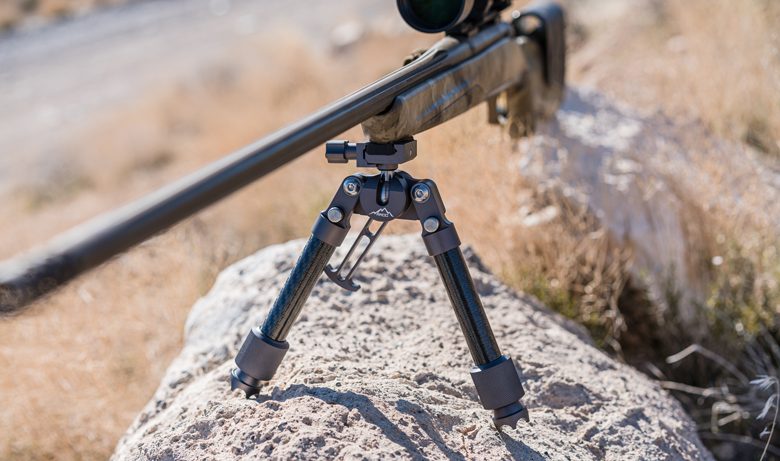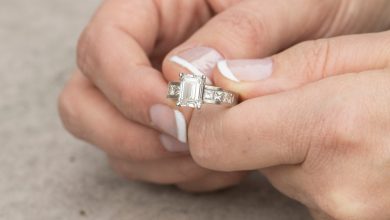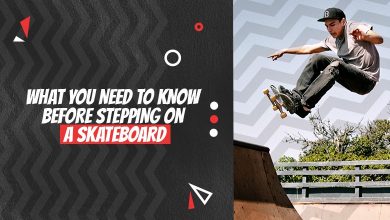How to choose the right Bipod- buying guide

Going bipod hunting? Or looking for a bipod to place on your rifle for target practice and competition shooting? This guide will help you choose the right bipod for you and your purposes.
First of all, it can be divided into three general categories:
- adjustable bipods
- swiveling bipods
- fixed bipods
Fixed bipods are one-piece legs that can’t be adjusted to a different angle or height. Adjustable bipod have a pivot point which you can adjust the bipod’s feet to different angles and also change the bipod’s overall height. Swiveling bipods features bipod legs that can swivel in one direction, usually 90 degrees. And bipods can be divided into 3 different types:
- rifle bipods
- shooting bipods
- hunting Bipods
Types of Bipods
Rifle Bipod
It is attached to the gun’s barrel or forearm via Pica tinny rail or swivel stud. The bipod legs are usually spring loaded, and can be extended or retracted depending on the bipod’s design. The gun bipod is usually used when shooting from a bench rest position, for target practice, and other precision shooting where accuracy is essential.
Shooting Bipods
It attached to the rifle’s body via swivel stud or sling swivels, not mounted on the gun’s barrel or forearm. The bipod feet usually do not extend, and can be folded when not in use. This bipod is usually used for standing position, 3-gun competitions to shoot shotgun targets, and other times when precision shooting is not required.
Hunting bipods
Bipods that are attached to the rifle via swivel stud or sling swivels are usually short bipods that are used for shooting from a sitting or kneeling position. The bipod feet usually extend and allow the bipod’s height to be adjusted. This bipod can also be inverted for even greater support, although it is more common on full sized bipods. This is usually used for shooting from a sitting position while hunting.
Bipod height and positioning
When shopping for bipods, bipod height should be an important factor to consider when choosing the bipod that will best fit your needs. The higher the bipod’s overall height is, the better it can support larger firearms such as scoped bolt action rifles and AR-15’s.
In addition Bipods with a lower overall height can support firearms that have shorter barrels, such as air rifles or 10/22 carbines.
In the world, it is common to see bipods advertised by their largest extended height (usually around 9 inches) and bipod’s smallest bipod height at the bipod’s feet (usually around 6 inches). But bipods can have bipod heights that are greater than their largest extended size, which is why bipod height should be measured from top of bipod’s feet to bipod pivot point, not just bipod pivot point to bottom of bipods feet.
How bipods attach to your rifle
The bipod you purchase should be compatible with the mounting method of your firearm. If your gun does not have a bipod mount such as rails or sling swivels, attaching a bipod will involve the use of a bipod adapter that works as a third hand for bipod attachment.
Types of bipod adapters
Pica tinny bipod adapter
Attaches to the bipod using a Pica tinny rail or bipod stud. Once attached, you can adjust how high or low the bipod sits on your firearm by simply loosening two bolts and rotating the bipod adapter until it is secured in its desired position.
Swivel bipod adapter
Attaches to the bipod stud or sling swivels of your rifle. This bipod adapter allows the bipod more flexibility when it comes to positioning, but can also be easily flung off while carrying or shooting.
Slip on bipod adapter
This is used for bipods with no bipod mount. The bipod is attached to the bipod adapter using one of the bipods bipod feet, which are slipped onto bipod stud or swivel, then tightened by a bolt or screw. This bipod adapter allows for the greatest positioning flexibility, but can also be difficult to attach depending on how tight the bipods bipod foot is.
Bipod feet and it’s types
Once you have chosen the bipod that best suits your needs, consider it will determine how stable or unstable your bipod is. Most bipods are sold separately from their bipod feet, but some come attached to it.
Magazine bipod feet
Usually sold separately, this is made of plastic or metal and allow the bipod to be placed on uneven surfaces like rocks or different types of dirt. Some of this have spikes for increased stability on grassy areas and mud. Some are also have bipod feet covers with rubberized bipod feet tips.
Swiveling bipod feet
This is a bipod foot that can pivot or swivel to different angles for support in prone shooting positions. These are usually used on full size bipods, but some bi-pods have these bipod feet built in.
Feet with bipod feet covers
it covers are made of rubber or plastic, and slip over the bipods feet when they need to be protected from damage, usually during transportation.
oar length should also be taken into consideration when shopping for a bipod that best suits your needs. A longer oar increases stability by increasing how far forward you can push your rifle’s for end without causing wobble or movement in your bipod or firearm.
However, bipods with longer oars are more difficult to carry because they are heavier and take up more space, making it harder to transport them in bags or cases easily. So consider what type of terrain you are shooting in most often, boar length, bipod feet type and bipod feet types when shopping for bipods. This is not true for all bipods but is something to keep in mind if you are unsure about what type of rifle you will be using your biped on.
Weight also affects how much ammunition your rifle can carry, so choose carefully depending on which type of firearm best suits your needs.
A spring loaded retractable bipods bipod feet will be practical for ranges of all lengths but may not provide as much support as other types of bipods when shooting over long distances due to their lighter weight.
For these reasons it is important to consider bipod feet options carefully when choosing bipods feet. Weight- bipods feet are available in a wide range of weights, so choose the right weight for your rifle based on its capabilities.
For More Articles: Visitpick.com




